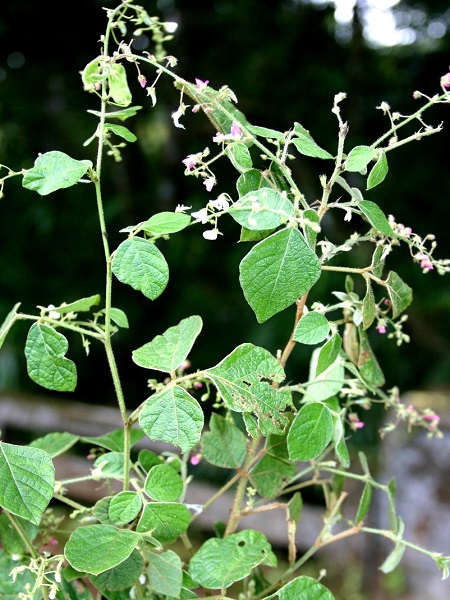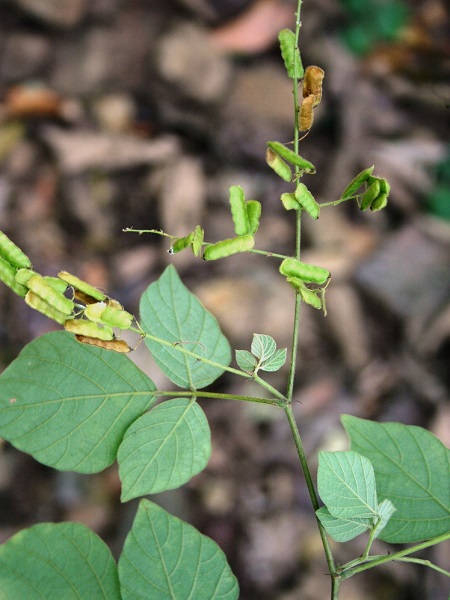
| Family | Fabaceae |
| English Name | NA |
| Malayalam Name | Moovila |
| Tamil Name | Nirmalli, Muvilai |
| Kannada Name | Amtubele Gida |
| Telugu Name | Nayakuponna, Muyyakuponna |
| Hindi Name | Chapakno |
| Sanskrit Name | Sanaparni |
| Trade Name | Moovila |
| Part Used | Roots |
| In Wild | Yes |
| Under Cultivation | Yes |
| Temperature | NA |
| Rainfall | NA |
| Farmers | NA |
| Traders | NA |
| Institution | NA |
| Individually | NA |
| State/Region | NA |
| District | NA |
| Nursery Information | NA |
| Yield | Yield may vary from 750 to 850 kilos of dried roots per hectare. |
| Economic of cultivation | NA |
| Quantitative quality standards | a. Foreign matter (other plant parts, soil, stone, sand, dust, organisms and their parts: Not more than 1.0 percent (w/w). b. Ash: Not more than 1.8 percent (w/w). c. Acid-insoluble ash: Not more than 1.2 percent (w/v). d. Ethanol-soluble extractives: Not less than 3.0 percent (w/v). e. Water-soluble extractive: Not less than 3.8 percent (w/v). |
| Description | NA |
| Agro technology/Cultivation practices | Agro-ecological requirements The plant grows in all types of soils. The plants are shade loving and are very suitable for intercropping. Planting-stock production The plants can be propagated by seeds without any pretreatments. The fruits are mature in February to March. Intercropping is the suitable method for growing these plants. Areca nut, rubber plantation and coconut fields are suitable for intercropping. Broadcasting is the best method for growing this plants. Seeds are mixed with 4 times of sand and broadcast-sown in the field. Seeds will germinate within 10-15 days. For broad casting 500 g of seeds are require for one hector. Cultivation Field planting: Before sowing the field should be ploughed and levelled. Broadcast the seeds in the field just at the onset of monsoon. The seeds will germinate in 10-15 days after sowing. The crop should be maintained without weed competition. Manuring/Fertilization: Manure/fertilizer application is done ideally after soil/plant analysis. Since the plant is able to fix nitrogen, organic matter is enough for this crop. Irrigation: Although irrigation is not essential in monsoon, but provide irrigation during drought conditions. Pest and diseases: Not reported. |
| Harversting | The roots will be ready for harvesting after one year of planting. The roots attaining 15 cm length are harvested after one year. Mature plants bearing the seeds are retained to get the natural regeneration. Hence it reduces the cost of planting. |
| Processing | Collected roots are cleaned and dried in shade. |
| References | NA |

